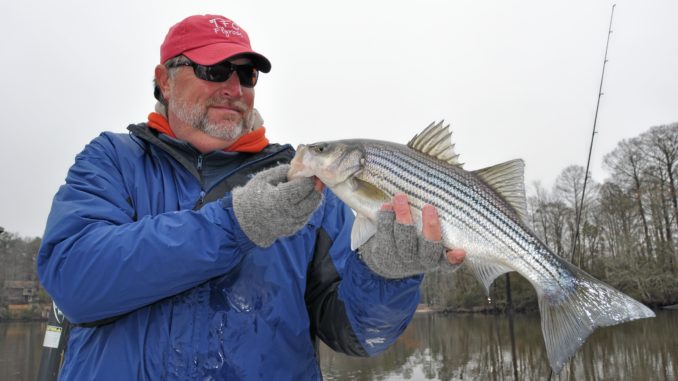
With winter holding its icy grip on North Carolina and killing speckled trout right and left along the coast, only a few places remain where anglers can have a reasonable chance of landing a fish.
One of those places is the Trent River, which flows from the southwest and joins the Neuse River at New Bern.
A man who will be found almost daily on the Trent is Gary Dubiel of Oriental.
A part-time registered nurse and full-time N.C. fishing guide for 10 years and owner of Spec Fever Guide Services (252-514-3484), Dubiel has turned his eye toward stripers since speckled trout have been put on the “no-catch” list by the N.C. Division of Marine Fisheries (although many of the places he fishes are inland waters and keeping specks is allowed by the administering N.C. Wildlife Resources Commission).
“Fishing for stripers in the Trent River right now takes a lot of patience and a fine touch with a rod and reel,” said Dubiel, a native Pennsylvanian who grew up outside Pittsburgh. “The reason is the water temperature. It’s so cold that fish are lethargic and lures need to be worked extremely slow. Plus, you’ve got to be ready to set the hook in an instant. When a striper hits when it’s this cold (40 degrees), it’s just a ‘tick’ on your line.”
Dubiel fishes small 3/8-ounce jigs that are fitted with 2-inch-long DOA or Storm soft-plastic baits. Paddletail plastics in natural colors (smoke to white) seem to get the best results in dark stained water. He uses Pflueger spinning reels mated to 7-foot Temple Fork Outfitter rods. His topwater rods are Gary Loomis models.
“Most of these stripers are native and stay in this area the whole year, around New Bern,” he said. “These are not ocean-run fish.”
The average specimens weigh from 1- to 6-pounds.
“We do get a 10-pounder now and then, but it’s rare because recruitment of older stripers is limited by the largemesh gill net by-catch,” he said. “Not many fish get past 6 pounds.”
Still, a typical day or half-day’s fishing can result in plenty of action and a dozen to two-dozen fish.
“It takes a light touch and you’ve got to be able to tell the difference between the bottom and a fish because you’ll be fishing on the bottom most of the time,” Dubiel said.
Ledges seem to hold most of the stripers, places where the water goes from deep (18- to 20-feet) to about 6-feet.
“You’ll usually get bites right on the break,” Dubiel said.
Other winter catches in the Trent may include large white and yellow “raccoon” perch, along with tackle-busting gar.


Be the first to comment